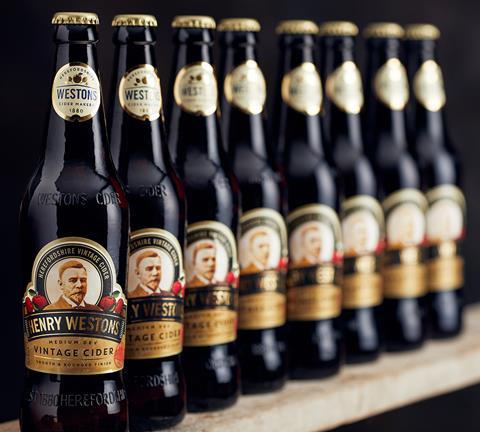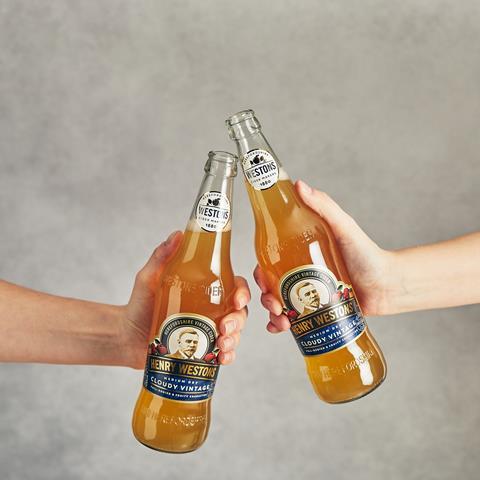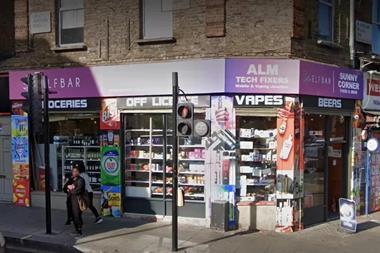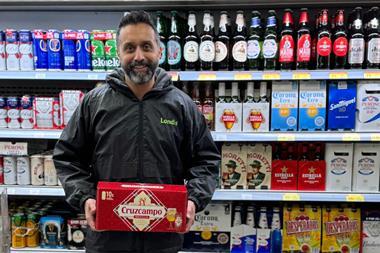With cider a popular category in the convenience channel, Westons Cider’s off-trade category manager, Emily Jenkins gives her view on how retailers can optimise sales – and why this means not getting distracted by innovation.
Cider represents a serious opportunity for convenience retailers with more than half of all off-trade sales now going through the channel1. In fact, data from the latest Westons Cider Report reveals that cider is worth £544m in convenience alone, meaning it’s more important than ever for c-stores to get their fixtures right if they wish to capitalise on category growth.
“The fast-paced convenience landscape is ever changing with retailers competing for footfall and bidding to boost basket spend in an increasingly tough economic climate,” says Westons’ off-trade category manager Emily Jenkins.
“Against this backdrop it’s easy to see how retailers can fall into the innovation cycle – constantly seeking new products to excite and intrigue shoppers. While this can certainly deliver on the latter, it isn’t always the winning formula store owners might think when it comes to getting cash in the tills.
“The innovation journey can be precarious for both suppliers and retailers, especially when we consider that almost half of cider sales (46.7%) in convenience come from the top 15 SKUs2. That’s why store owners should be encouraged to aim for a well-considered fixture with the lion’s share dedicated to products guaranteed to boost the bottom line.”

Stocking best-sellers
Before looking to add range, retailers should ensure they’re stocking best-selling SKUs as these will drive both volume and value sales, explains Emily.
“Ultimately, there’s a reason these products are best-sellers,” she says. “Great taste, quality and value are just some of the reasons drinkers reach for these ciders time and time again, so it is imperative shoppers know they can rely on their local retailers to have them – and keep them – in stock.”
Among the best-selling ciders, Henry Westons Vintage Reserve 500ml bottle is the No.1 SKU in both convenience and the total market, with a rate of sale more than four-times its nearest competitor3. In fact, a bottle of Henry Westons Vintage is now sold more than once every second, with sales a staggering £11.1m ahead of the second-place product4. “With space in convenience at a premium, retailers need to prioritise products like this within their cider range,” says Emily.
Tapping into trends
Retailers should also consider what trends are driving category growth, adds Emily. “As the popularity of value amber and white ciders continues to dwindle (respectively down -5.3% and -20.5% YOY5), mainstream and premium apple ciders are the products that should be on retailers’ radars.
“Accounting for just under two-thirds (63%) of cider sales6, apple remains the cornerstone of the category, its share gradually increasing over the past few years as fruit cider stabilised at around a third of the market.
“What’s more, apple cider shoppers spend almost double the amount compared to flavoured cider shoppers (£77.91 vs £31.54 annually)7. This means that while retailers should explore fruit and flavour innovations – particularly during the summer months – space should be prioritised for quality apple ciders.”
Today’s cider drinkers are also willing to pay more for premium products that are made in a traditional way and have a sense of provenance, notes Emily.
“The growth of crafted cider demonstrates this trend perfectly,” she says. “This sub-category is by far the fastest-growing sector in convenience, up 24% YOY8, and increasingly stealing share within total cider from 17.2% to 20%9. Despite the increasing popularity of crafted cider, the sub-sector only accounts for 17.9% of share in the convenience channel10, meaning there’s still plenty of headroom for growth.
“Retailers looking to unlock this growth should first and foremost be tapping into these category-driving trends rather than adding new lines.”
Of the top five convenience SKUs, Henry Westons Vintage Reserve attracts the highest price per litre at £4.71 –£1.74 more than the next best-selling SKU11. “This makes it a sure bet for increasing margins,” reveals Emily.

Striking the right balance
Despite the advice given so far, innovation does play an important role in category growth, especially when it comes to attracting non-traditional cider drinkers – like women and younger adults – and spreading cider’s geographic footprint, says Emily.
“Adding flavour innovations is a great way for retailers to differentiate their alcohol fixture, driving both excitement and sales, especially ahead of key sales periods such as summer and Christmas,” she adds. “That said, given the space challenges in c-stores compared to supermarkets, store owners should be mindful of what NPD will work for their shoppers, prioritising variants that align with category trends around premium, heritage flavours.”
“Our characterful Henry Westons range, made traditionally from apples grown within 50 miles of our Herefordshire mill, fits the bill perfectly with Henry Westons British Vintage and Henry Westons Cloudy Vintage making a great secondary SKU for retailers looking to add variety to their fixtures.”

Ranging and chilling
In terms of ranging, apple should occupy two-thirds of total fridge space in canned or bottles formats, with flavoured innovations, in single bottles or 4-packs, taking up the majority of the remaining space alongside a few facing for no/low alcohol options, advises Emily.
“As cider in the channel is largely an impulse purchase to be enjoyed the same day it’s important retailers adequately chill cider. With Henry Westons Vintage single bottle alone accounting for 6.9% of convenience sales12 this is the most important SKU c-stores should prioritise in the chiller if they don’t miss out on crucial sales.”
Westons Cider’s innovation dos & don’ts
- Do prioritise best-sellers over innovation, with double or even triple facings, as out-of-stocks are the biggest limitation to cider sales.
- Don’t stock innovation for innovation’s sake. Instead, seek out established brands and proven best-sellers that tap into consumer trends.
- Do actively communicate to customers that you’re stocking their favourites with in-store displays, well stocked chillers and cross-category promotions.
- Don’t over-range formats. Pack sizes tend to be smaller in this channel than in multiple grocery, with singles and 4-packs dominating the top 10 most popular products.
- Do consider the innovation ratio of your fixture – best-selling apple SKUs should be the priority with fruit and flavoured ciders accounting for around a third of fridge space.
For more information visit www.westons-cider.co.uk
Sources
1 Westons Cider Report 2023
2- 4 IRI 52w/e 22nd April 2023
5 - 7 Westons Cider Report 2023
8 - 10 IRI 52 w/e 20th May 2023
11 - 12 IRI 52w/e 22nd April 2023































No comments yet